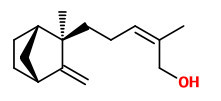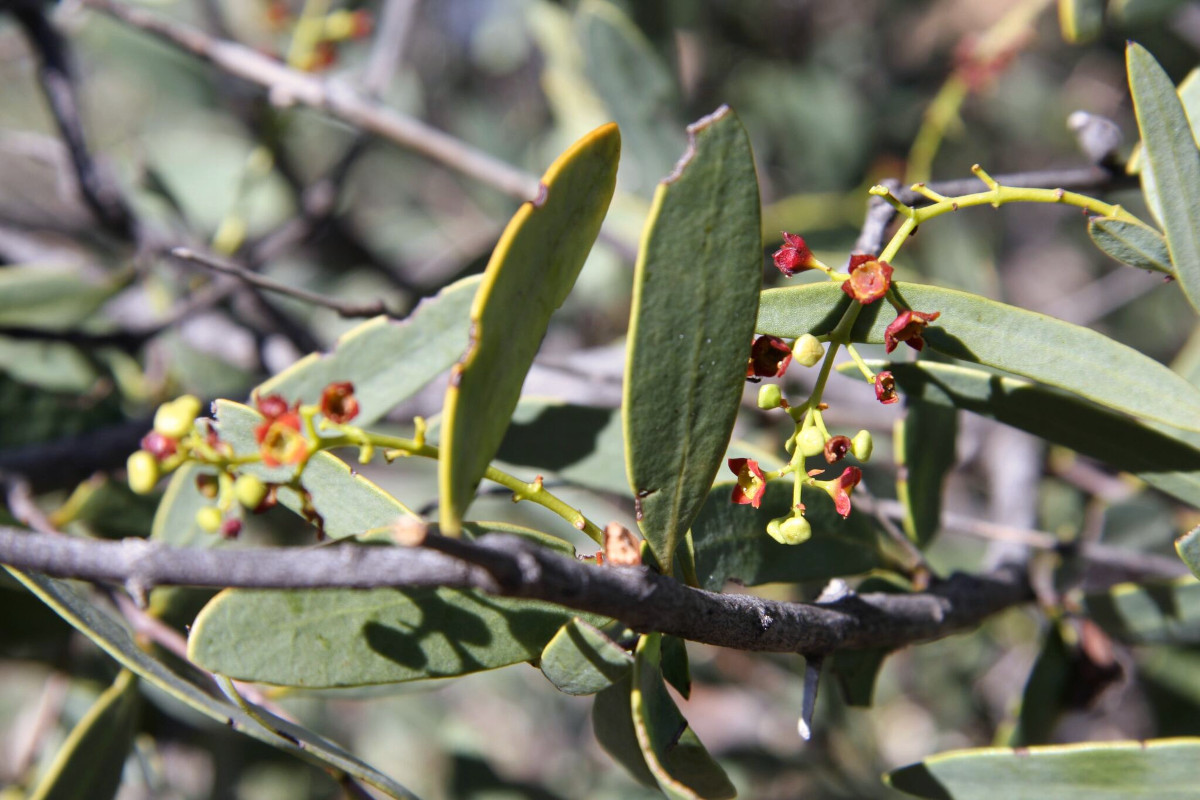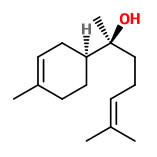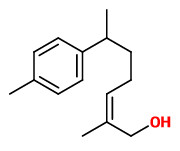Santalum spicatum (R.Br.) A.DC. - syn.Eucarya spicata (R.Br.) Sprague & Summerh.; Fusanus spicatus R.Br. - Santalaceae
West Australian sandalwood, Westaustralischer Sandelholzbaum, Westaustralisches Sandelholz
Large shrub or small tree, up to 7m high, native to Southwest Australia; leaves elliptic-lanceolate; flowers born in clusters, tiny, red-green, scented; fruit green to brown, globular, about 2cm in diam.
It is one of four species of the family Santalaceae to occur in Western Australia and is a hemiparasite requiring macronutrients from the roots of hosts (main host species Acacia acuminata). The wood is the source of Australian sandalwood oil. https://en.wikipedia.org/wiki/Santalum_spicatum
„It is interesting to look at some historical figures on exports of sandalwood. In 1849,1204 tons of sandalwood, valued at £ 10,711, were shipped from WA and by 1899,4,470 tons worth £ 33,525 were sent to Singapore and China. At this time it was stated that all sandalwood trees of any size were cut down within a radius of 150 miles from Perth. In 1890, the Sydney Morning Herald reported that a Distillery Company had been established near Albany and the first instalment of twenty cases of sandalwood oil was shipped to England. Exports of timber continued to grow until in 1920, more than 14,000 tons of wood left from WA. Despite these huge export quantities, this species is said to produce an inferior oil to the Indian sandalwood (S.album) and has a rotation sequence of about 100 years compared to a rotation period of 20-30 years for S.album. Nevertheless plantations are being established in WA to capitalise on this market.“
[Santalum - A Fascinating Genus, Australian Plants online - September 2003 - Association of Societies for Growing Australian Plants] http://www.anpsa.org.au/APOL31/sep03-3.html
„Santalum spicatum is listed as Vulnerable under the SA NP&W Act and is at risk of illegal collection. The aromatic oils in the wood is highly valued by illegal traders supplying an export market. Denaturing spatial data will make wild populations more difficult to locate. Santalum lanceolatum is not listed under the EPBC Act or NPW Act, but it also produces aromatic oils and is sometimes confused with S.spicatum.“
http://bie.ala.org.au/species/urn:lsid:biodiversity.org.au:apni.taxon:297108
The steam-distilled wood oil of Santalum spicatum is entirely composed of sesquiterpenoids. The major components of the oil were (E,E)-farnesol (31.6%), epi-α-bisabolol (anymol) (10.7%), α-santalol (9.1%), (Z)-nuciferol (6.5%), (Z)-β-santalol (5.4%), (Z)-lanceol (3.9%) and epi-β-santalol (2.9%).
[Constituents of Santalum spicatum (R. Br.) A. DC. wood oil., Brophy, J.J., Fookes, C.J., Lassak, E.V., Journal of Essential Oil Research, 3(6), 1991, 381-385]
 (Z)-β-santalol |  (Z)-α-santalol |
Extraction of the wood with supercritical CO2 afforded higher yields (8.4% buttwood, 4.8% branchwood) than by steam distillation (3.1% buttwood, 1.3% branchwood). The percentage of the five main components epi-α-bisabolol, (Z)-α-santalol, (E,E)-farnesol, (Z)-β-santalol, and (Z)-nuciferol were highest in the steam distillate.
[Western Australian sandalwood oil: extraction by different techniques and variations of the major components in different sections of a single tree., Piggott, M.J., Ghisalberti, E.L., Trengove, R.D., Flavour and fragrance journal, 12(1), 1997, 43-46]
„In routine testing, a small percentage (0.1-2.4%) of people have been found to be allergic to album oil. However, in many of these studies, the provenance, purity, and source of the sandalwood is not clear. For example, other species of sandalwood, such as Western Australian (Santalum spicatum) or Hawaiian sandalwood (Santalum paniculatum), contain significant percentages of farnesol, an irritant, that is not found in oil from S. album.“
[Moy, Ronald L., and Corey Levenson. „Sandalwood album oil as a botanical therapeutic in dermatology.“ The Journal of clinical and aesthetic dermatology 10.10 (2017): 34] https://www.ncbi.nlm.nih.gov/pmc/articles/PMC5749697/

Santalum spicatum, Cunyu Station, Wiluna WA, Australia (2012) © rogstanden CC BY-SA 4.0 inaturalist.org


